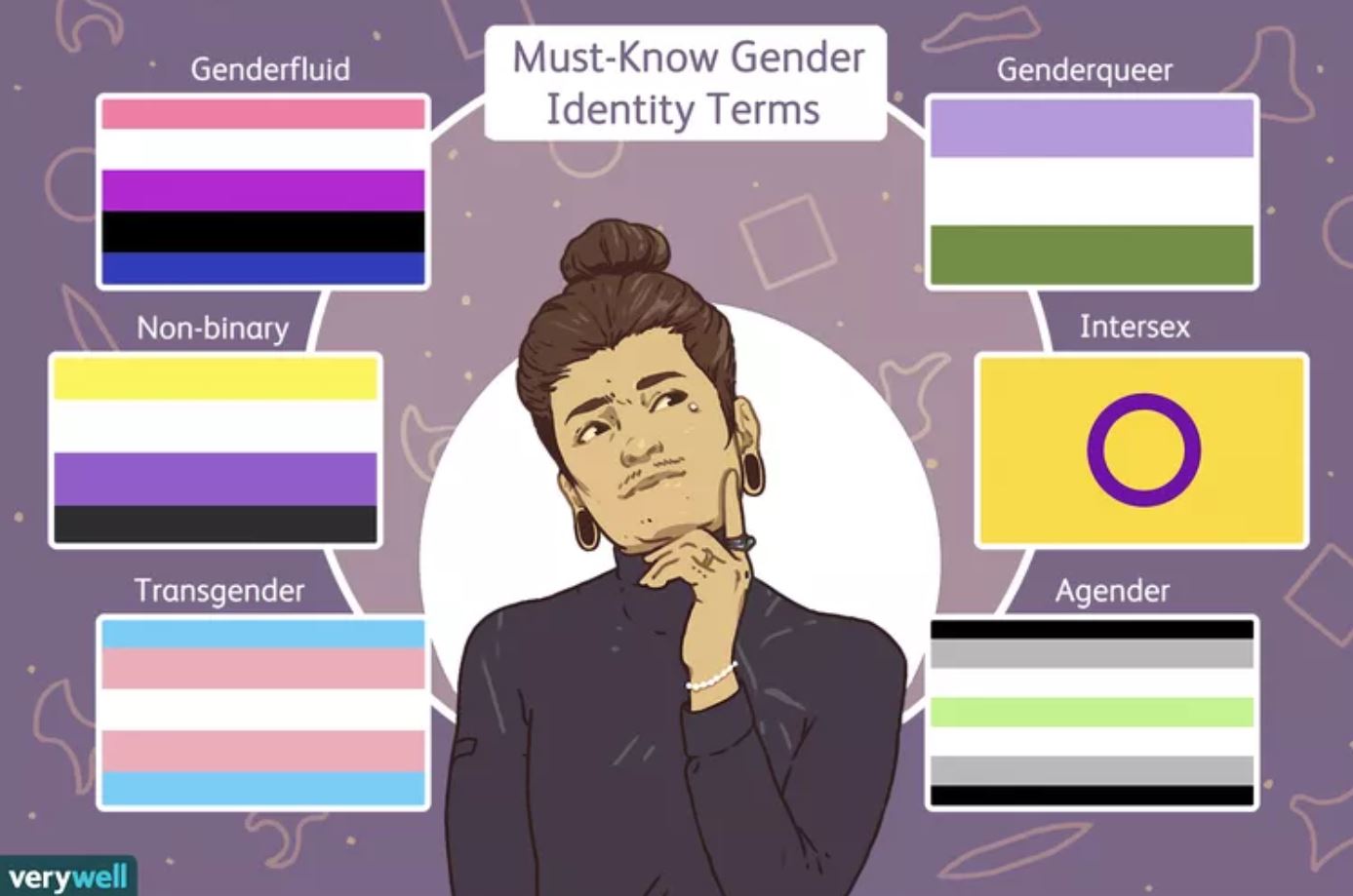By Shauna Dobbie
Gender identity is a topic my mom and I fight about whenever anyone happens to mention it around us. Well, she fights; I just purse my lips and refuse to say anything most of the time. Here is what I would say.
If someone tells you who they are, respond with kindness. If they ask you to use different pronouns, do your best. Apologize if you misgender someone. Try not to assign a gender to an individual if it isn’t necessary, and it is almost always unnecessary. But it is tricky when you aren’t used to it.
When I was growing up, it wasn’t something I thought of much. We laughed at All in the Family when Archie met and gave mouth-to-mouth resuscitation to a woman who turned out to be a “transvestite” in 1975. There was Klinger on MASH (who was only cross-dressing in an attempt to get discharged from the army) and Billy Crystal played Jodie on the show Soap. Sometime between then and having children, I heard of men with a predilection for wearing ladies’ underwear in the boudoir. Oh! And The Rocky Horror Picture Show. These are all comedies and that’s how anything was considered if it had to do with presenting differently from what your genitals at birth would suggest.
Things are different today: we have Kaitlyn Jenner and moviemakers the Wachowski sisters who’ve transitioned into women, and Elliot Page who is now a man. Orange is the New Black presented a touching transgender woman (played by a transgender performer). There are innumerable examples of transgender characters on TV and performers in the entertainment world.
I started to pay attention to the issues when my daughter told me a few years ago that I was “cisgender”. It means I’m not transgender; it means what most of us used to call “normal”. I’d never heard the term before that. Since then, both my daughters have introduced us to friends who go by various pronouns.
It turns out that transgenderism is growing in popularity. In the 2022 survey in Canada, people ages 55 and up are 0.12 percent transgender. Below 55, the number starts to go up slightly, 1/100 of a percent for each gender in every five-year age span, until you hit 30 to 39-year-olds, when it makes a jump to 0.17 percent, and then it starts to jump. By the time you get to 20 to 24-year-olds, the total number of transgender persons hits 0.43 percent of the population of Canada! That is almost 60,000 people!
How did that happen?
If you ask some people, it’s teachers who are making kids transgender. (If you ask teachers, they’ll tell you they can’t make kids do or be anything! As a parent, I concur.) The response from more conservative jurisdictions, like Saskatchewan and New Brunswick, has been to impose legislation around teachers and trans students using adopted pronouns and names. Parents of these students must be informed and must agree to teachers using these names and pronouns. And when these laws go against the Charter of Rights and Freedoms? The provincial governments can just use the notwithstanding clause. It’s an outrage.
It may be that the more inclusive atmosphere at schools today has to do with the rise in the number of transgender people in the survey results, but it doesn’t follow from that that teachers are making kids transgender, or even making kids believe they are transgender. It could be that they are making it possible for kids to consider whether they might be better off as the opposite gender. And three or four times as many kids are coming to the conclusion that, yeah, that might be alright.
I imagine that gender identity could be as non-binary as sexuality. Think of the Kinsey Scale, where a person who is completely heterosexual is a 0 and a person who is completely homosexual is a 6. The numbers 1 through 5, of course, represent people who are in between: the guys in prison who become “gay for the stay”, for instance, would rate as number 1 or 2.
Maybe there are some absolutely cisgender people who would rate 0 and absolutely transgender people who would rate 6 on a similar scale. The 6-rating people are those who can’t bear to live as their gender at birth, or the .12 percent of older people in the Canadian survey. Those who rate a 5 or a 4 are more likely to say that they are transgender today than they were 40 years ago because they’re more likely to consider whether they might be, having grown up in the more inclusive environment being fostered in schools today. In the past, they would have just decided to accept that they weren’t really content with their gender—or maybe that they just weren’t content in general and had no idea why.
So now your children or grandchildren or their friends may be asking you to use different pronouns for them. Maybe this trend won’t catch on any more than the spelling womyn, or maybe it will be like calling someone the chair of an organization instead of the chairman or chairwoman.
You may have a hard time using they and them when the individual you’re talking about is, to you, clearly a she and her. My suggestion is, do your best. Why would you call someone a thing they don’t want to be called? The grammar we grew up with did not allow for using they in the singular, but the word you was once the plural form, with the singular being thou. Things change. Try to get used to it.



